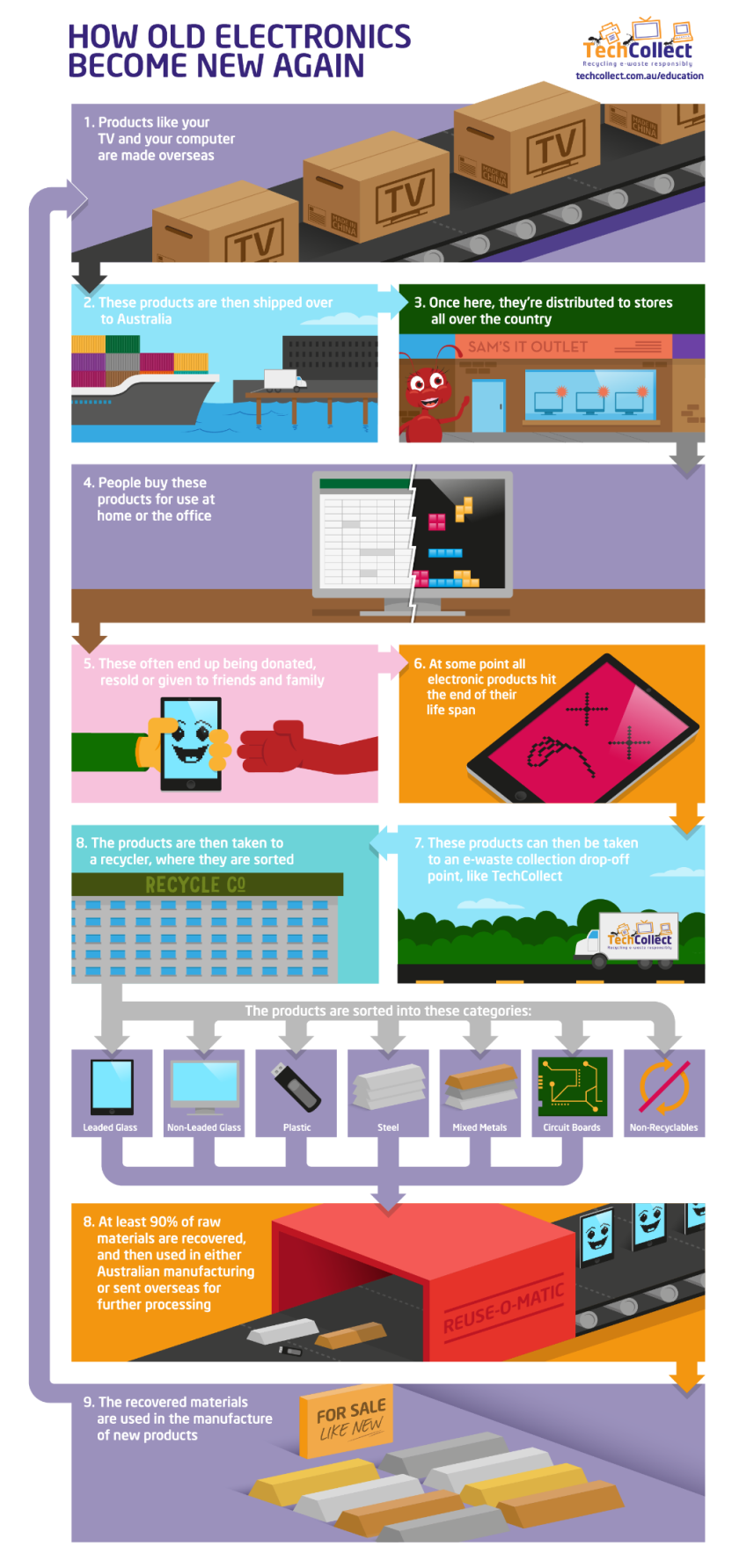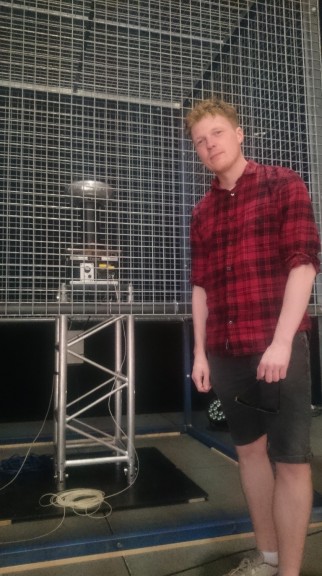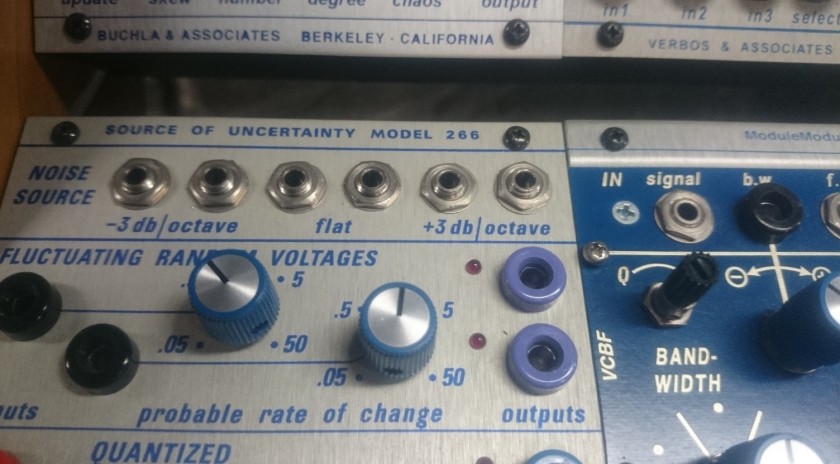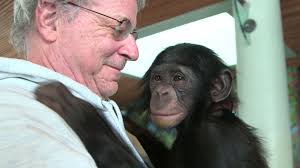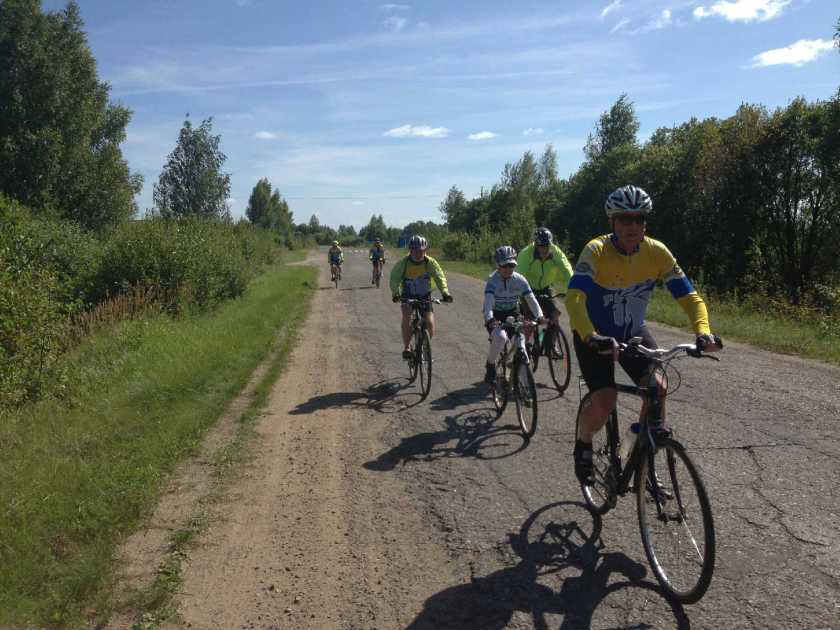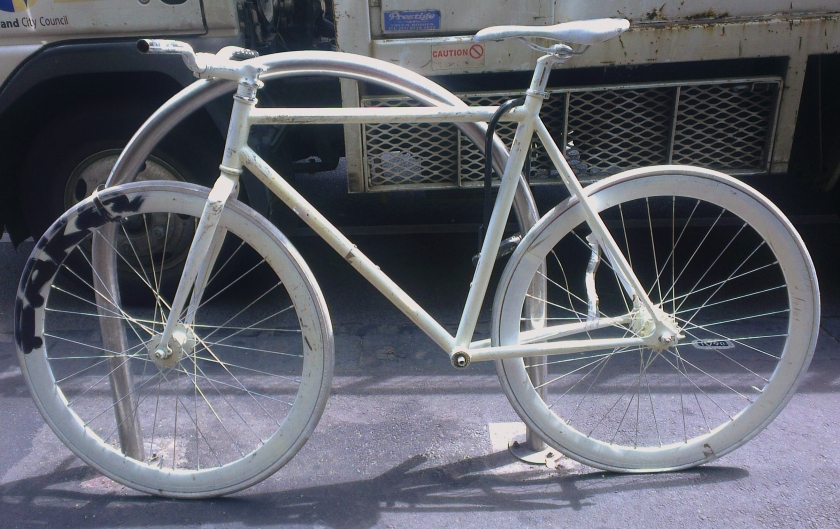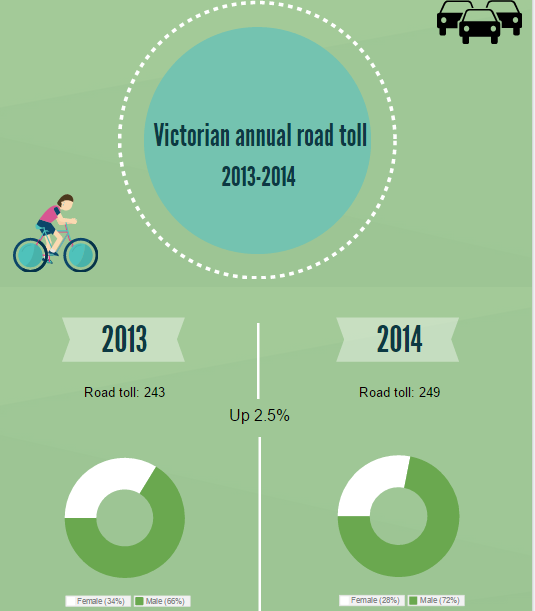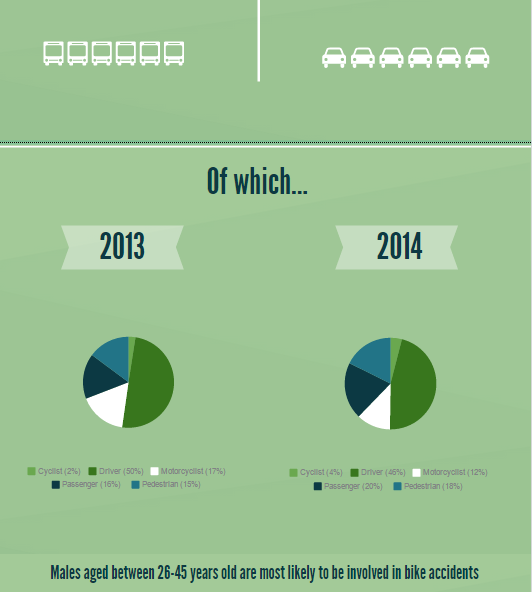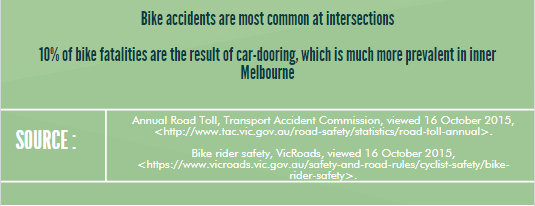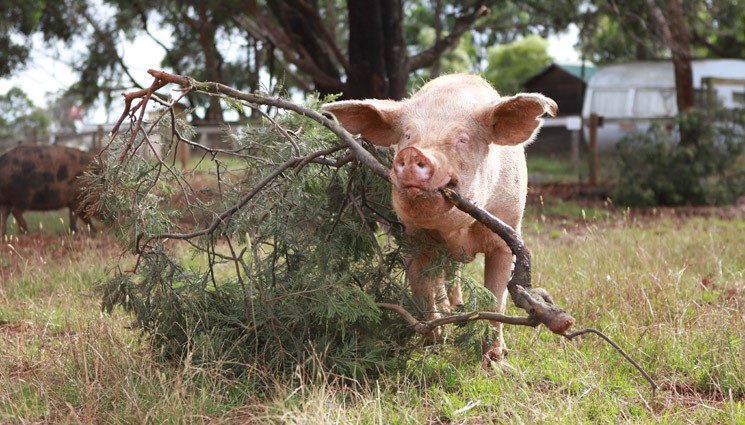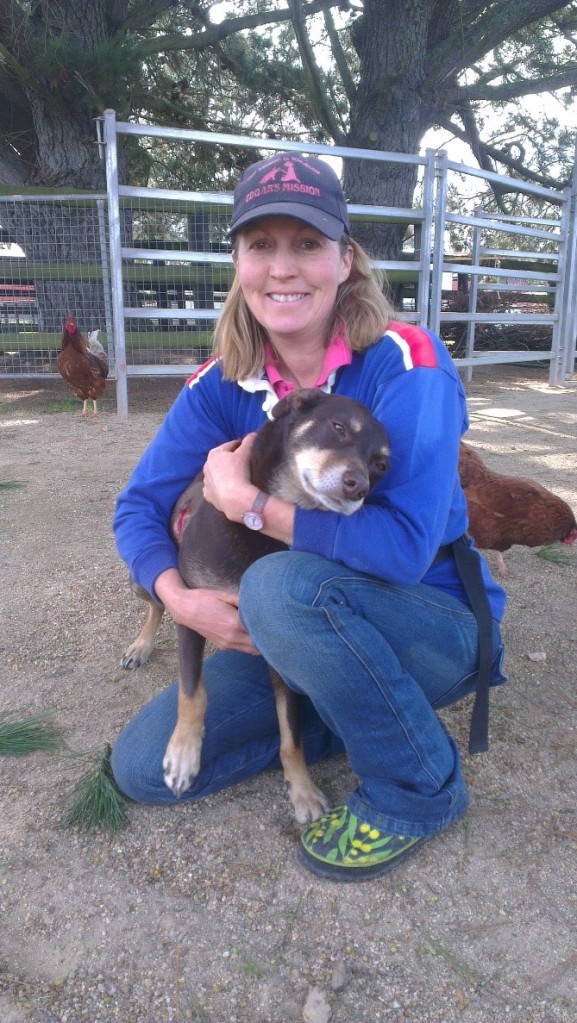Amy Robertson
This essay will examine how factory farming – and farm animals more broadly – are represented in both mainstream and alternative Australian media and make recommendations for improvements in reporting. Public interest regarding social issues and subsequent participant mobilisation is largely determined by media coverage and framing. Through the use of content analysis, findings suggest media reports on factory farming generally conform to typical narrative and frame structures, and these media frames largely fail to mobilise readers or incite social movements. Furthermore, journalists rarely independently seek out information, verify truth claims or investigate the issue of factory farming. It will be argued that in order to produce valuable, high quality journalism, and for journalism to fulfill its democratic obligations, journalists must be willing to take risks, subject conflicting claims to scrutiny, and break free from formulaic news coverage that conforms to certain notions of ‘newsworthiness’ or ‘objectivity’.
Through media framing, the media focuses attention on specific events. The way in which the media frame an issue can determine how seriously the public take it (London 1993). Findings suggest reports on factory farming are formulaic – following rigid formulas, values and structures – and encourage a restricted and insufficient reading of events (Moeller 1999, p. 14). Most reports on factory farming are reactionary in nature – reacting to a specific event by delivering the facts, but providing little analysis. This type of reportage is what Snow and Benford call ‘diagnostic framing’, meaning it identifies a condition or event, but offers scant analysis or solutions, and largely fails to mobilise readers. Diagnostic framing generally achieves consensus – “we all agree this is wrong” – but action does not automatically succeed diagnosis and consensus (Snow & Benford 1988, pp. 199-201). It is argued the generation of motivation is separate and distinct from diagnostic methods of framing; it is not enough to diagnose a problem, an audience must be convinced of the need for action – what Snow and Benford refer to as ‘motivational framing’ (Snow & Benford 1988, p. 202). Regarding the issue of factory farming, this need must stem from moral considerations; given that factory farming is human caused, we have a moral imperative to act on it.
It is argued that ‘motivational framing’ mobilises people most effectively – “…diagnostic frames alone, no matter how richly developed, do little to affect action mobilization…” (Snow & Benford 1988, p. 203). Strict adherence to objectivity is not always desirable; in contrast to a diagnostic, neutral and dispassionate approach, motivational framing uses emotion to inspire change – “emotions do things, they align and bind individuals into communities” (Rodan & Mummery 2014). Effective motivational framing will address people in a way that encourages them to be morally responsive. Journalists are not slaves to one explanatory approach or framing method; many methods are available and journalists should be adopting as many styles as possible in order to stimulate citizens to take action on issues that do not affect them directly (Adam 1993, pp. 34-35).
Another feature common to reports on factory farming is the ‘he said, she said’ style of reporting. ‘He said, she said’ journalism, a term coined by media critic Jay Rosen, is the presentation of news in the form of a back-and-forth dialogue between interviewees, with no independent assessment over truth claims made by the journalist. It is a cheap and efficient method of reporting, mostly the result of newsroom practices and timeliness pressures (Rosen 2009). This formulaic method arises out of the need to condense information (Moeller 1999, p. 47). The problem is news stories are almost always more complex than the coverage they receive; it is not sufficient to blame ‘time poor audiences’ for shoddy journalism. Reactionary and ‘he said, she said’ reporting are lazy forms of journalism in which the journalist ‘plays it safe’. But quality journalism requires journalists to take risks. Journalists must be capable of making sharp judgements. With an issue like factory farming, it is up to the journalist to make an independent assessment and subject conflicting claims to independent scrutiny (Environmental Reporting n.d). Journalists all too frequently offer no analysis and force the reader to decide what is right by providing a balance of sources from either side of the debate.
Providing a balance of sources from each side of the argument or offering equal treatment is hardly impartial or objective when the truth falls almost completely on one side. It is common for reports on factory farming to rely on sources who have vested interests in how farm animals are treated and used. Those who have financial ties to factory farming receive equal space in the media, albeit they often feature less prominently in written reports. Balance is not necessarily ethical – “Journalists associate the middle with truth, when there may be no reason to” (Rosen 2009). Journalists must be capable of rejecting the notion of balance when balance becomes bias (Environmental Reporting n.d).
There is little variation in the types of sources used and how journalists structure stories and their sources; this can lead to a type of cognitive or confirmation bias in which people see only what they want to see or believe – “Cognitive bias can become a collective media phenomenon when a large number of journalists approach an issue from a similarly biased angle…” (Nikkanen 2012; Jost et al 2009, p. 173-194). Journalists have a myriad of sources at their disposal – policy experts, economists, ethicists, agricultural researches, social scientists, animal behaviorists, government officials – and should be utilising as many as possible. “Diversity is not just there, it has to be constructed…” (Couldry 2015, p. 50).
Media framing of an issue shapes public understanding and possible solutions. As is typical of diagnostic and reactionary reporting, solutions to the problem of factory farming are rarely espoused due to an overemphasis on diagnoses (Snow & Benford 1988, p. 199), and when discussed, solutions are narrow in focus. At best, reports on factory farming connect individual behaviour to the perpetuation of factory farming, but it can be dangerous to reduce social patterns to individual behaviour, or explain away and simplify the existence of a system like factory farming by reference to consumer habit or individual choices. Framing factory farming as an individual problem with individualised solutions stifles public debate, simplifies the issue, discourages collective action, neglects the political and economic nature of the issue and leads to narrow solutions (Snow & Benford 1988, p. 204). The unintended consequence is that “the reader is left worried by a system exposed, but ultimately unsure of what to do” (Pearce 2011).
This type of reporting approaches people as consumers rather than citizens and is in line with Western and liberal democratic values and their over-emphasis on individualism, self-reliance, freedom and autonomy – “…a liberal democratic framework minimizes the strong sense of shared purpose needed to undergird participation in joint deliberation and action” (Steiner & Roberts 2011, p. 193). By addressing readers as individuals free to make their own choices on factory farming, audiences are atomised. There is no sense of community or shared purpose amongst readers. Encouraging people to face social issues as democratic citizens, rather than consumers in a marketplace, can help foster greater moral and social responsibility, encourage civic engagement, create communities and enhance democracy. Society’s most entrenched social problems require a broadening of discourse and cross-sectoral solutions. Attempting to write about social issues from a collectivist perspective is one way in which this can be achieved (Basu-Zharku 2011). Public or civic journalism highlights how citizens can help solve a problem, and addresses readers as part of a larger autonomous public – a “public sphere” – capable of joint participation and action (Atton & Hamilton 2008, pp. 87-88). However, a lack of solutions in reporting is not unique to the reporting of factory farming, but to social issues more broadly (Adkins Covert & Wasburn 2009, p. 56). When issues are sufficiently and robustly discussed, we can begin to find truly effective solutions (Atton & Hamilton 2008, pp. 92-93).
Ultimately there are a lack of journalists willing to investigate or report on factory farming or the welfare of farm animals. The majority of investigative work regarding factory farms comes from whistleblowers or animal activists, and the majority of articles on factory farming are simply a response to the absolute worst cases of cruelty obtained on camera. No coverage means little understanding and minimal interest amongst citizens – “Public response…is in direct correlation to the publicity an event receives” (Moeller 1999, p. 13). High legal costs, lengthy court processes and ag-gag laws can be debilitating to journalists and media outlets, thus, investigative work of this kind can be threatening (Nikkanen 2012). Time and resource considerations further restrict a journalists’ ability to report on factory farming. Newsroom structures and practices encourage formulaic, generic coverage. News groups are guided by budgets, thus, they select crowd pleasing stories that require minimal resources (Moeller 1999, pp. 19-20).
In a sense, journalists are not ignorant on the issue of factory farming, they are what writer Margaret Heffernan dubbed ‘willfully blind’ (TEDxDanubia 2013). To be willfully blind is to have access to important information but to choose to ignore it – “Still a man hears what he wants to hear and disregards the rest…” (Alterman 2003). Factory farming is a deeply embedded practice, commercially unpopular to report on, and a topic capable of making its readers uncomfortable; this is likely to raise concern within news organisations whose main objective is to produce news that will sell. However, the media cannot justify its role as ‘fourth estate’ if its primary concern is to avoid inconveniencing or angering readers with inconvenient truths – “…dominated by reporters anxious not to inconvenience the authorities and their readers” (AFP 2015). Many topics have the potential to offend or upset people, but this should not deter journalists from reporting on them. Nor should journalists always be encouraged to take an unemotional, dispassionate approach, with strict adherence to objectivity (Alternative Journalism, p. 86). Empathy and objectivity are not mutually exclusive (Blank-Libra 2012). As discussed in relation to sources, a preoccupation with neutrality and balance can create information bias. Society needs hot-headed journalists (Tumarkin 2010).
Remaining silent or apathetic in the name of commercial interests or reader satisfaction poses a serious threat to justice and democracy (Howley 2008). Stories should not be neglected simply because they are unpopular or difficult to report on – to do so is to dilute discourse that is essential to democracy. Journalists should instead engage in moral scrutiny and report on unpopular topics in new and interesting ways. A democratic society cannot exist without a well-informed citizenry (Steiner & Roberts 2011, pp. 192-193). If journalists are unwilling to report or investigate factory farming, they should encourage greater civic and public engagement with the issue, or work more closely with citizen journalists and animal activists to report on it. A genuinely democratic society requires an open and democratic communication system – a media system in which a politics of voice, analysis and dialogue can flourish. Journalists in Australia are predominantly free to write and publish information without fear of punishment or persecution – but freedom doesn’t exist if you don’t use it.
The neglection of farm animals and factory farming from media discussion is unsurprising; farm animals have consistently been neglected from our moral community, and this is justified by the divide we create between ourselves and non-human animals, common in the West and extending back to the philosophy of Descartes – that animals lack sentience – and thinkers such as Immanuel Kant who emphasised human rationality (AFP 2010). Carnism, a term coined by psychologist Melanie Joy, refers to the idea that eating meat is a choice, and choices always stem from beliefs. Thus, meat-eaters, consciously or unconsciously, adopt an invisible belief system, or ideology that conditions them to eat certain or specific animals within different cultures and societies – hence, ‘carnism’ (What is carnism? n.d). This concept ties in with the phenomenon of ‘affected ignorance’, in which people deny causal connections between their actions and the suffering of others, choose to remain uninformed and uncritically accept societal norms and customs (Bergmann & Maller 2009, p. 2). Regardless of the reasons, the animals we use in production are largely invisible to us.
The schism created between ourselves and farm animals unconsciously seeps into language use, from which journalists are not immune. Specific language normalises treatment of farm animals. Farm animals are frequently commodified and discussed ‘en masse’ through the use of terms such as “cattle”, “livestock” and “beef”. Industry language such as “livestock” creates a dichotomy between ourselves and non-human animals; one distances themselves from animals by failing to individualise them. “This ‘massification’ of individuals, which robs them of any feature which might elicit sympathy or care, allows more readily for their exploitation” (Walters 2012, p. 105). Animals are, in language, defined by their utility to humans – hence terms such as “dairy cow” and “lab rat”. These terms are largely unnoticed or uncritsised as language use of this sort is routine and normal. Repetition has made them commonplace. But these terms are hardly natural – it stands to reason that dairy cows are not dairy cows by nature, but because of what humans do to them. Rather than use terms that define animals solely by their utility to humans, perhaps we could challenge the human definition inherent in these terms, for example, one could say – “cows used for dairy” or “rats used in research labs” instead of ‘dairy cows’ and ‘lab rats’. This reformed use of language more accurately describes the relationship between human and non-human animals used for consumption – not as a voluntarily entered into contract – but a relationship in which freedom of choice and agency are extremely one-sided. It also challenges the false conception that animals can only be described and understood based on their utility to human beings.
Another issue is the use of biased language such as ‘supposedly’ and ‘allegedly’ to influence interpretations when describing statements made by animal activists. Terms such as these delegitimise the claims and arguments of animal activists (Drake 2004, p. 53). They invest one side of a debate with value while disparaging the other. Altering language to deny reality is a phenomenon the media are willingly complicit in – perhaps more a product of laziness as opposed to deliberately conscious bias. However, compliance allows terms to enter the media unchallenged. Journalists must respect the subconscious influence of words and the ideas behind them.
The media has an important role in determining social problems and shaping public discourse and subsequent public interest. Drawing on qualitative and quantitative analysis on the coverage of factory farming in a variety of mediums, research has indicated that most forms of media give minimal coverage to factory farming. Furthermore, coverage is narrow in focus, with a heavy reliance on monolithic narratives that pit one group against another and present only a chronology of events. Social issues cannot be reduced to single narratives. Narrative is flexible and not bound to immutable, rigid formulas; coverage must transgress passive, formulaic structures.
The success of any social movement can be determined by the extent to which it mobilises the public toward social change; in regards to factory farming, the media have largely failed to inspire audiences to take action. Today’s media environment fosters an ethos of conformity, neutrality and objectivity and has quieted the conscience of journalists. But for journalists, there should be no neutrality about social injustices. An informed citizenry requires morally responsive, politically engaged reporting. Investigative journalists must be willing to challenge and critique injustice or abuse – the credibility of the profession relies on this.
BIBLIOGRAPHY
AFP 2012, ‘Animals Australia campaigns to end ‘factory farming’, The Australian, 22 October, viewed 16 September 2015, <http://www.theaustralian.com.au/news/nation/animals-australia-campaigns-to-end-factory-farming/story-e6frg6nf-1226500798269>.
AFP 2013, ‘Animal cruelty is the price we pay for cheap meat’, Rolling Stone, 10 December, viewed 16 September 2015, <http://www.rollingstone.com/feature/belly-beast-meat-factory-farms-animal-activists>.
AFP 2014, ‘Australian Capital Territory to ban factory farming’, ABC Rural, 25 February, viewed 16 September 2015, <http://www.abc.net.au/news/2014-02-25/act-bans-factory-farming/5282210>.
AFP 2012, ‘Animal-rights activists target factory farms’, The Australian, 22 March, viewed 17 September 2015, <http://www.theaustralian.com.au/news/health-science/animal-rights-activists-target-factory-farms/story-e6frg8y6-1226306641965>.
AFP 2012, ‘Boycott’ factory farming’, The Australian, 23 October, viewed 17 September 2015, <http://www.theaustralian.com.au/news/health-science/boycott-factory-farming/story-e6frg8y6-1226501043526>.
AFP 2012, ‘Call to stop cruel factory farms’, The Advertiser, 29 February, viewed 17 September 2015, <http://www.adelaidenow.com.au/news/call-to-stop-cruel-factory-farms/story-e6frea6u-1226284525684>.
AFP 2012, ‘Clean and green’ state Tasmania bans battery eggs’, The Australian, 22 May, viewed 17 September 2015, <http://www.theaustralian.com.au/national-affairs/state-politics/clean-and-green-state-bans-battery-eggs/story-e6frgczx-1226362836421>.
AFP 2013, ‘Coles ditches Animals Australia bags opposing factory farming conditions’, ABC, 5 June, viewed 17 September 2015, <http://www.abc.net.au/news/2013-06-05/coles-ditches-animals-australia-bags/4734358>.
AFP 2012, ‘Coles tackles factory farming’, Sydney Morning Herald, 23 October, viewed 16 September 2015, <http://www.smh.com.au/national/coles-tackles-factory-farming-20121022-281gt.html>.
AFP 2013, ‘Factory farming masks meat’s true cost’, ABC The Drum, 21 June, viewed 16 September 2015, <http://www.abc.net.au/news/2013-06-21/kirby-modern-meat/4770226>.
AFP 2014, ‘Lucent documentary on Australian pig farming reveals ‘the true price we pay for bacon’, News.com.au, 8 October, viewed 16 September 2015, <http://www.news.com.au/finance/business/lucent-documentary-on-australian-pig-farming-reveals-the-true-price-we-pay-for-bacon/story-fnda1bsz-1227083534465>.
AFP 2013, ‘OPINION: We all pay a high price for cheap, factory-farmed chicken meat’, The Courier Mail, 3 October, viewed 17 September 2015, <http://www.couriermail.com.au/news/opinion/opinion-we-all-pay-a-high-price-for-cheap-factoryfarmed-chicken-meat/story-fnihsr9v-1226731804689>.
AFP 2014, ‘Pace Farm denies cruelty to chickens’, News.com.au, 20 August, viewed 16 September 2015, <http://www.news.com.au/finance/business/pace-farm-denies-cruelty-to-chickens/story-fnda1bsz-1227030624922>.
Coles joins campaign against factory farms 2013, ABC Lateline, viewed 17 September 2015, <http://www.abc.net.au/lateline/content/2013/s3774673.htm>.
Council tells farmer to change his farming methods or move his business 2015, ABC Lateline, viewed 17 September 2015, <http://www.abc.net.au/lateline/content/2015/s4286263.htm>.
Freeman, C, Bekoff, M & Bexell, S 2011, ‘Giving Voice to the “Voiceless:” Incorporating Nonhuman Animal Perspectives as Journalistic Sources’, Journalism Studies, no. 12, pp. 590-607, Georgia State University, viewed 16 September 2015.
From farm to fork 2010, ABC Lateline, viewed 17 September 2015, <http://www.abc.net.au/lateline/content/2010/s2856547.htm>.
Weitzenfeld, A & Joy, M 2014, An Overview of Anthropocentrism, Humanism, and Speciesism in Critical Animal Theory, Academia, viewed 14 September 2015, <http://www.academia.edu/6086062/An_Overview_of_Anthropocentrism_Humanism_and_Speciesism_in_Critical_Animal_Theory>.
REFERENCES
Adam, S 1993, Notes Towards a Definition of Journalism: Understanding an old craft as an art form, Carleton University, Ottawa.
Adkins Covert, T & Wasburn, P 2009, Media Bias? A comparative study of TIME, NewsWeek, The National Review, and the progressive coverage of social issues, 1975-2000, Lexington Books, UK.
AFP 2010, ‘Reforming the farm’, The Australian, 1 September, viewed 22 September 2015, <http://www.theaustralian.com.au/arts/books/reforming-the-farm/story-e6frg8nf-1225911725079>.
AFP 2015, ‘The inconvenience of good journalism’, Rand Daily Mail, 14 September, viewed 20 September 2015, <http://www.rdm.co.za/politics/2015/09/14/the-inconvenience-of-good-journalism>.
Alterman, E 2003, What Liberal Media?, Basic Books, New York.
Atton, C & Hamilton, J 2008, ‘Objectivity Revisited’, in C Atton and J Hamilton (eds), Alternative Journalism, Sage, London, pp. 84-96.
Basu-Zharku, I 2011, ‘Effects of Collectivistic and Individualistic Cultures on Imagination Inflation in Eastern and Western Cultures’, Student Pulse, vol. 3, no. 2, Student Pulse, viewed 20 September 2015.
Bergmann, I & Maller, C 2009, What Factors lead Australians to support or actively reject Factory Farming, RMIT University, viewed 22 September 2015, <http://mams.rmit.edu.au/3ic1i6skrogqz.pdf>.
Blank-Libra, J 2012, Compassion is not journalism’s downfall, it’s journalism’s salvation, Poynter, viewed 27 October 2015, < http://www.poynter.org/how-tos/writing/193090/compassion-is-not-journalisms-downfall-its-journalisms-salvation/>.
Couldry, N 2015, ‘Alternative Media and Voice’, in C Atton (ed), Routledge Companion to Alternative and Community Media, Routledge, New York, pp. 43-53.
Drake, J 2004, Would a farm by any other frame smell as sweet? News frames, factory farms, and social protest, ProQuest, viewed 27 October 2015, < http://search.proquest.com.ezproxy.lib.monash.edu.au/docview/305221756/59DCB576707540BEPQ/1?accountid=12528>.
Environmental Reporting n.d, Poynter News University, viewed 18 August 2015, < http://moodle.vle.monash.edu/pluginfile.php/3369573/mod_resource/content/1/Environmental%20reporting%20_NewsU.pdf>.
Howley, K 2008, Democracy Now! Decolonising US News Media, Transformations Journal, viewed 26 October 2015, < http://www.transformationsjournal.org/journal/issue_16/article_05.shtml>.
Jost, J, Liviatan, I, Van Der Toorn, J, Ledgerwood, A & Mandisodza, A 2009, ‘System Justification: How do we know it’s motivated?’, in R Bobocel, A Kay, M Zanna & J Olsen (eds), The Psychology of Justice and Legitimacy (Ontario Symposia on Personality and Social Psychology series), Psychology Press, New York, pp. 173-203.
London, S 1993, How the Media Frames Political Issues, Scott London, viewed 17 September 2015, <http://www.scottlondon.com/reports/frames.html>.
Moeller, S 1999, Compassion Fatigue: How the Media Sell Disease, Famine, War and Death, Routledge, New York.
Nikkanen, H 2012, They shoot citizen journalists, don’t they? Curating or Outsourcing? Opportunities and Threats in post-gatekeeper journalism, FAIFE, viewed 14 September 2015, <http://www.ifla.org/publications/they-shoot-citizen-journalists-dont-they-curating-or-outsourcing-opportunities-and-thre>.
Pearce, J 2011, ‘A Brave New Jungle: Factory Farming and Advocacy in the Twenty-First Century’, Duke Environmental Law and Policy Forum, vol. 21, no. 2, Questica, viewed 15 September 2015.
Rodan, D & Mummery, J 2014, The ‘make it possible’ multimedia campaign: generating a new ‘everyday’ in animal welfare, Media International Australia incorporating Culture and Policy, viewed 15 September 2015, <http://go.galegroup.com.ezproxy.lib.monash.edu.au/ps/retrieve.do?sort=DA-SORT&docType=Essay&tabID=T002&prodId=EAIM&searchId=R2&resultListType=RESULT_LIST&searchType=AdvancedSearchForm&contentSegment=¤tPosition=2&searchResultsType=SingleTab&inPS=true&userGroupName=monash&docId=GALE%7CA396767752&contentSet=GALE%7CA396767752&authCount=1&u=monash>.
Rosen, J 2009, He Said, She Said Journalism: Lame Formula in the Land of the Active User, Press Think, viewed 13 September 2015, <http://archive.pressthink.org/2009/04/12/hesaid_shesaid.html>.
Snow, D & Benford, R 1988, ‘Ideology, frame resonance, and participant mobilization’, in S Tarrow (ed), From Structure to Action: Comparing Social Movement Research Across Cultures (International Social Movement Research), Jai Press, pp. 197-217.
Steiner, L & Roberts, J 2011, ‘Philosophical linkages between public journalism and citizen journalism’, in S Papathanassopoulos (ed), Media Perspectives for the 21st Century, Routledge, New York, pp. 191-210.
TEDxDanubia 2013, The dangers of “willful blindness”, March, viewed 22 September 2015, <https://www.ted.com/talks/margaret_heffernan_the_dangers_of_willful_blindness?language=en#t-552923>.
Tumarkin, M 2010, What it means to be a real journalist, Inside Story, viewed 16 September 2015, <http://insidestory.org.au/what-it-means-to-be-a-real-journalist/>.
What is carnism? n.d, Carnism Awareness and Action Network, viewed 26 October 2015, < http://www.carnism.org/what-is-carnism>.
